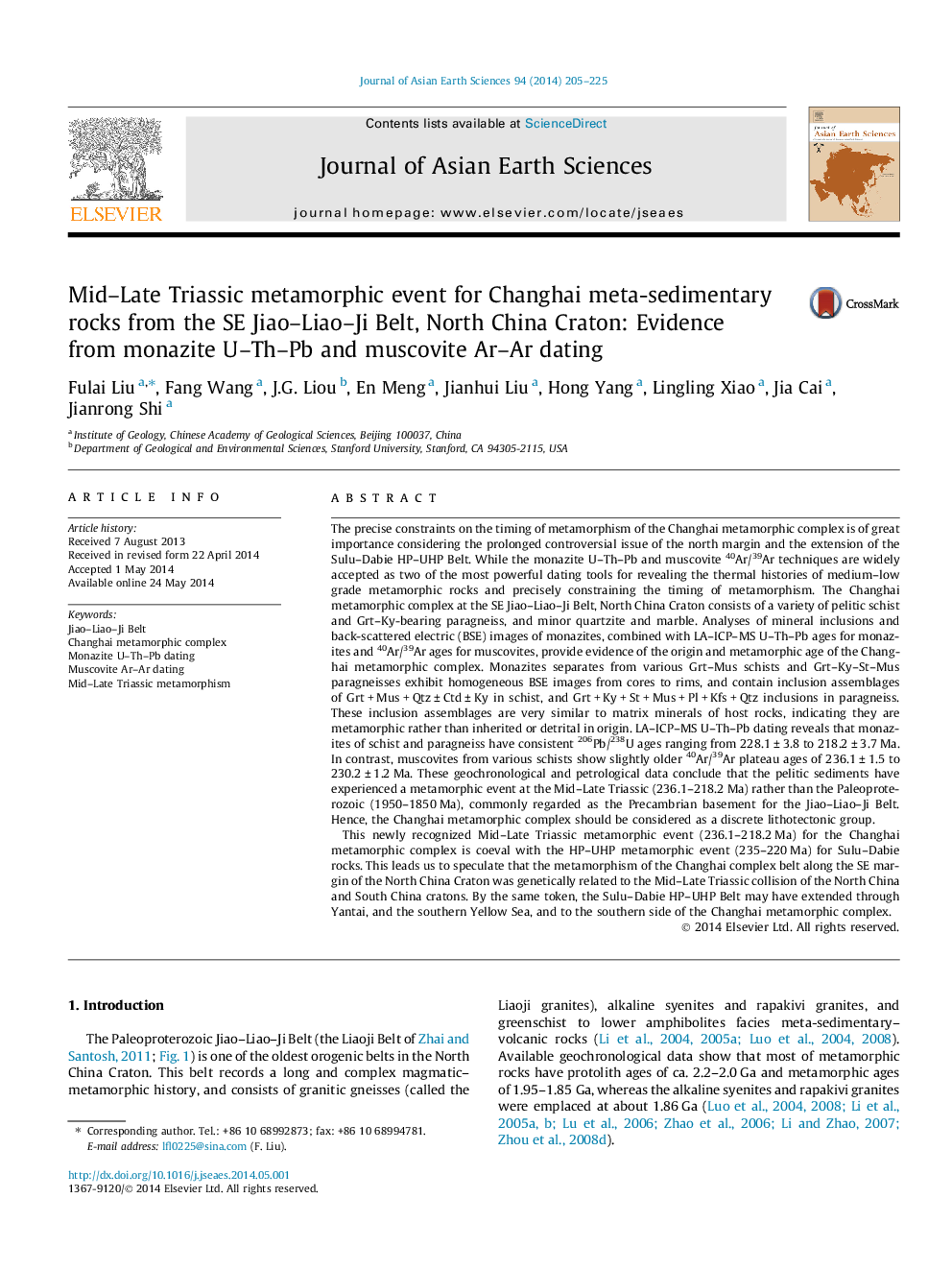| کد مقاله | کد نشریه | سال انتشار | مقاله انگلیسی | نسخه تمام متن |
|---|---|---|---|---|
| 4730591 | 1640374 | 2014 | 21 صفحه PDF | دانلود رایگان |

• Abundant and distinct metamorphic mineral inclusions in monazite.
• Monazite and muscovite record a Middle–Late Triassic metamorphic event.
• Formation of the Changhai complex was related to collision of the North and South China Cratons.
The precise constraints on the timing of metamorphism of the Changhai metamorphic complex is of great importance considering the prolonged controversial issue of the north margin and the extension of the Sulu–Dabie HP–UHP Belt. While the monazite U–Th–Pb and muscovite 40Ar/39Ar techniques are widely accepted as two of the most powerful dating tools for revealing the thermal histories of medium–low grade metamorphic rocks and precisely constraining the timing of metamorphism. The Changhai metamorphic complex at the SE Jiao–Liao–Ji Belt, North China Craton consists of a variety of pelitic schist and Grt–Ky-bearing paragneiss, and minor quartzite and marble. Analyses of mineral inclusions and back-scattered electric (BSE) images of monazites, combined with LA–ICP–MS U–Th–Pb ages for monazites and 40Ar/39Ar ages for muscovites, provide evidence of the origin and metamorphic age of the Changhai metamorphic complex. Monazites separates from various Grt–Mus schists and Grt–Ky–St–Mus paragneisses exhibit homogeneous BSE images from cores to rims, and contain inclusion assemblages of Grt + Mus + Qtz ± Ctd ± Ky in schist, and Grt + Ky + St + Mus + Pl + Kfs + Qtz inclusions in paragneiss. These inclusion assemblages are very similar to matrix minerals of host rocks, indicating they are metamorphic rather than inherited or detrital in origin. LA–ICP–MS U–Th–Pb dating reveals that monazites of schist and paragneiss have consistent 206Pb/238U ages ranging from 228.1 ± 3.8 to 218.2 ± 3.7 Ma. In contrast, muscovites from various schists show slightly older 40Ar/39Ar plateau ages of 236.1 ± 1.5 to 230.2 ± 1.2 Ma. These geochronological and petrological data conclude that the pelitic sediments have experienced a metamorphic event at the Mid–Late Triassic (236.1–218.2 Ma) rather than the Paleoproterozoic (1950–1850 Ma), commonly regarded as the Precambrian basement for the Jiao–Liao–Ji Belt. Hence, the Changhai metamorphic complex should be considered as a discrete lithotectonic group.This newly recognized Mid–Late Triassic metamorphic event (236.1–218.2 Ma) for the Changhai metamorphic complex is coeval with the HP–UHP metamorphic event (235–220 Ma) for Sulu–Dabie rocks. This leads us to speculate that the metamorphism of the Changhai complex belt along the SE margin of the North China Craton was genetically related to the Mid–Late Triassic collision of the North China and South China cratons. By the same token, the Sulu–Dabie HP–UHP Belt may have extended through Yantai, and the southern Yellow Sea, and to the southern side of the Changhai metamorphic complex.
Figure optionsDownload as PowerPoint slide
Journal: Journal of Asian Earth Sciences - Volume 94, November 2014, Pages 205–225